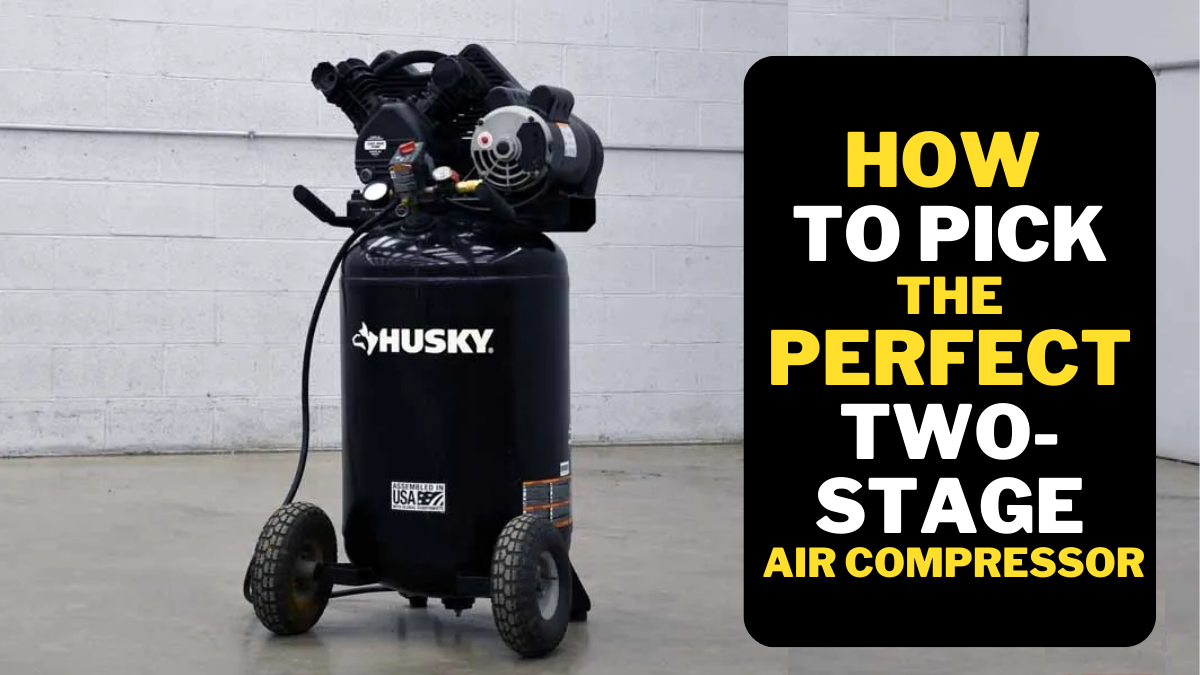When it comes to powering your pneumatic tools and equipment, a reliable air compressor is essential. Two-stage air compressors are particularly popular for their ability to deliver high-pressure air consistently and efficiently.
However, with various models available on the market, selecting the perfect two-stage air compressor can be a daunting task. In this guide, we will walk you through the key factors to consider, enabling you to make an informed decision and choose the ideal two-stage air compressor for your needs.
Understanding Two-Stage Air Compressors
Two-stage air compressors operate in two distinct stages to produce compressed air. In the first stage, air is initially compressed and delivered to an intermediate storage tank.
From there, in the second stage, the air is further compressed to the desired pressure level before being released.
Also Read: 2 stage air compressor vs single stage air compressor
This dual-stage process allows for higher pressure and greater efficiency compared to single-stage compressors, making them suitable for demanding applications such as industrial and commercial use.
Factors to Consider
- Required Air Volume: Consider the air volume requirements of your pneumatic tools and equipment. Calculate the cubic feet per minute (CFM) needed to operate your tools effectively. It’s crucial to select a two-stage air compressor that can deliver the required CFM at the desired pressure level consistently.
- Maximum Pressure: Determine the maximum pressure requirement for your applications. Two-stage air compressors typically offer higher maximum pressures than single-stage models. Ensure the compressor you choose can handle the specific pressure needs of your tools or equipment.
- Horsepower (HP): The horsepower rating of an air compressor indicates its motor power and overall performance. Higher horsepower generally correlates with increased CFM and pressure output. Consider the power requirements of your tools and select an air compressor with adequate horsepower to meet your needs.
- Tank Size: The tank size determines the amount of compressed air available for use before the compressor cycles on again. A larger tank size is advantageous for applications that demand continuous and extended usage, as it reduces the frequency of the compressor cycling. Assess your usage patterns and select a tank size that ensures a sufficient air reserve without being excessive.
- Duty Cycle: The duty cycle refers to the amount of time an air compressor can run within a given time frame. It is typically expressed as a percentage. A higher duty cycle indicates a longer continuous run time before the compressor requires a cooldown period. For those working on projects that demand uninterrupted operation, such as creating detailed hausarbeiten, considering an air compressor with a high-duty cycle can be crucial.
- Utilizing a service like “hausarbeit schreiben lassen” can significantly assist in managing the workload by providing expert help in crafting the hausarbeit, ensuring that the technical requirements do not impede the creative process. For demanding applications, choose an air compressor with a high-duty cycle to prevent overheating and ensure uninterrupted operation.
- Quality and Reliability: Investing in a reputable brand known for producing high-quality air compressors is crucial. Read customer reviews and seek recommendations from professionals in your industry. A reliable air compressor will provide longevity, durability, and consistent performance, minimizing maintenance and downtime costs.
- Noise Level: Consider the noise level produced by the air compressor, particularly if you will be operating it in a residential or noise-sensitive area. Look for compressors designed with noise reduction features such as soundproofing insulation or vibration isolation.
- Safety Features: Ensure the air compressor you select incorporates essential safety features, such as automatic pressure shut-off, thermal overload protection, and pressure relief valves. These features protect against over-pressurization and prevent potential accidents or damage.
Conclusion
Selecting the perfect two-stage air compressor involves careful consideration of your specific requirements. Assess factors such as air volume, maximum pressure, horsepower, tank size, duty cycle, quality, noise level, and safety features.
Understanding your needs and comparing different models are essential steps in making an informed decision when choosing a reliable two-stage air compressor. In a similar vein, seeking assistance with academic writing, such as utilizing “ghostwriter preise” for guidance, can significantly enhance the quality and coherence of your work, ensuring it meets your demands and academic standards.
Just as a well-selected air compressor is an investment that will enhance productivity and efficiency in your pneumatic operations, choosing the right help for your academic endeavors can similarly boost your performance and results over the long term.
Remember, a well-selected air compressor is an investment that will enhance productivity and efficiency in your pneumatic operations.
